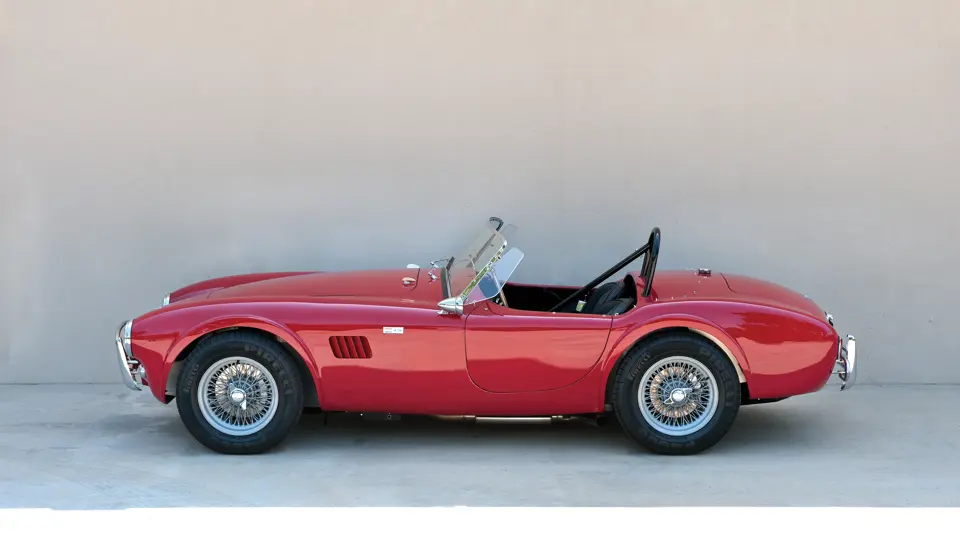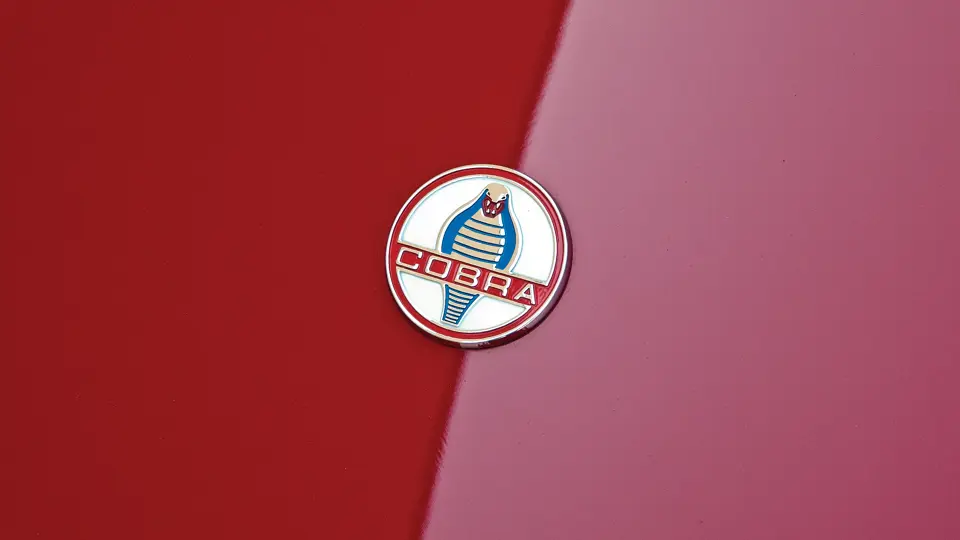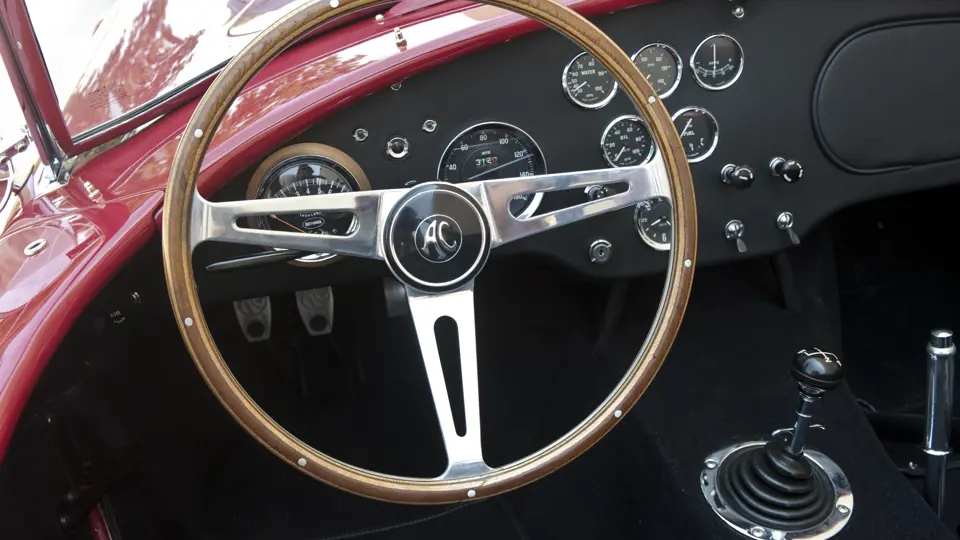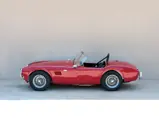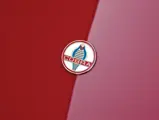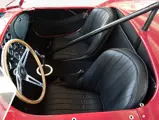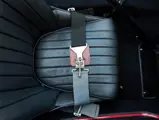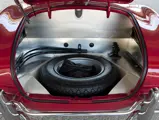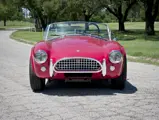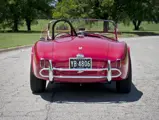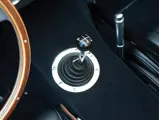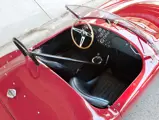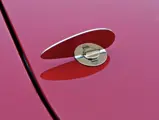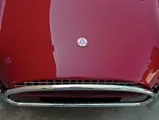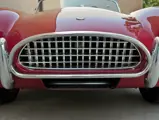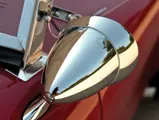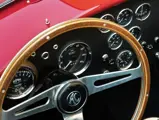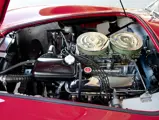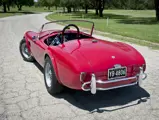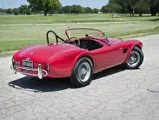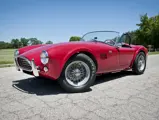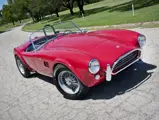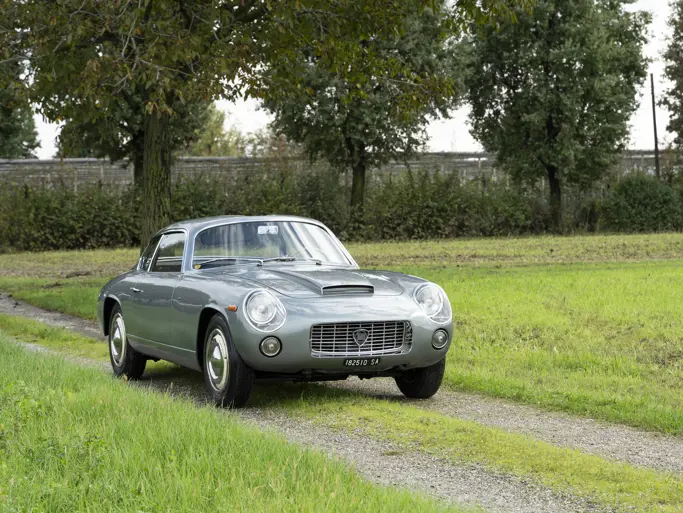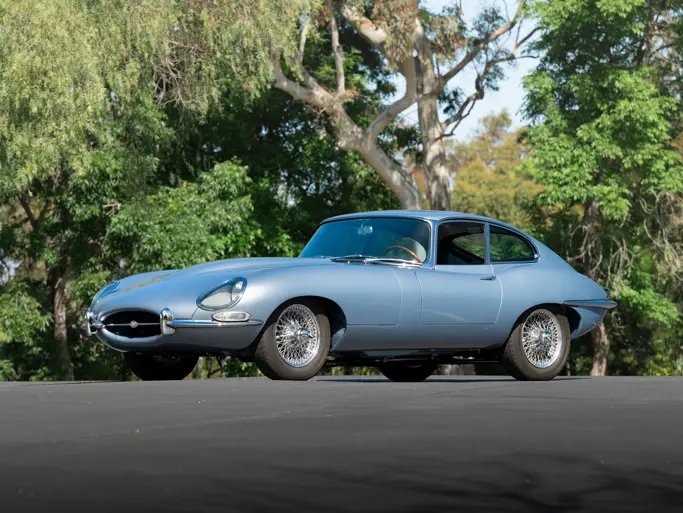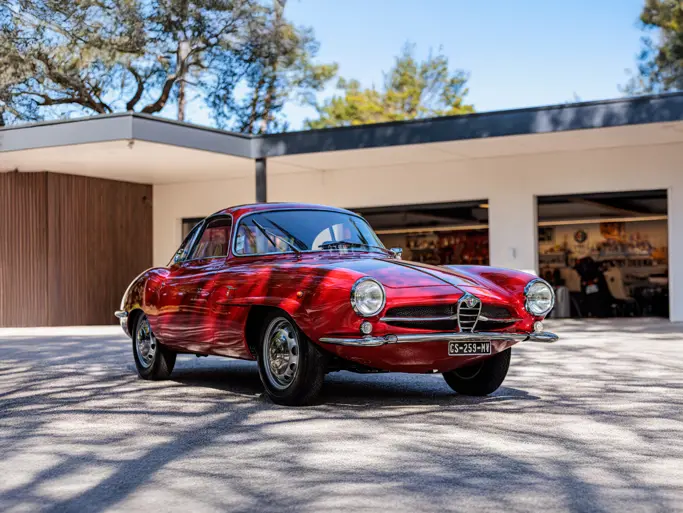289 cu. in. OHV V-8 engine, four-barrel carburetor, four-speed transmission, ladder-type steel tubing chassis with independent front and rear suspension with A-arms, transverse leaf springs and tube shock absorbers, rack and pinion steering and four-wheel hydraulic disc brakes. Wheelbase: 90"
- Early 289 Cobra with extensive history
- Documented restoration by Cobra expert Bill Kemper
- Under 10,000 miles from new, with Class “A” options; MSRP $5,195
The history of Anglo-American hybrid sports cars can be traced back to the original Ford V-8 of 1932, which provided bulletproof engines to power elegant two-seaters. Famous marques with this configuration between the wars included Jensen, Brough Superior, Railton, Batten and a homebuilt V-8 Ford special that even won the 1936 Monte Carlo Rally.
But Carroll Shelby’s 1962 Cobra roadster represents the pinnacle of the concept. It was a matter of perfect timing. Shelby, at 37, was winding up a very successful racing career, which had peaked in 1959, when he won the 24 Hours of Le Mans race for Aston Martin. Shelby became the Goodyear Racing tire distributor for the Western US in 1961 and started his own racing school at Riverside Raceway in California. All he needed was a car bearing his name.
Shelby considered putting a V-8 engine into the Austin-Healey 3000, but Donald Healey was doing fine with his BMC factory deal and was not interested. However, AC Cars of Thames Ditton in Surrey was more amenable. The company’s John Tojeiro-designed Ace roadster had been a force to reckon with in British sports car racing for six years, but the hottest motor, a prewar BMW two-liter, six-cylinder, was ceasing production.
Bristol Cars had been making the engine under license, but their “Gentleman’s Express” coupes had been getting bigger and bigger, and the engine had been stretched to its limit. Bristol decided to do away with the old six-cylinder and use a 331-cubic inch Chrysler V-8, which meant that AC needed a new motor. The Hurlock brothers, who owned AC, had been working with tuner Ken Rudd, who was generating as much as 170 horsepower from the 2.6-liter English Ford Zephyr OHV six-cylinder. But the higher horsepower showed up the weakness of the engine’s bottom end, leading to “light bulb” motors, which burned brightly but not for long.
Shelby considered using a small-block Chevrolet V-8, but GM was very protective of its Corvette franchise and didn’t want to subsidize any competition. Instead, Ray Brock told Shelby about a new lightweight Ford V-8 engine. Displacing 221 cubic inches, its thin-wall construction meant it weighed little more than the outgoing Bristol six, and when Ford engineer Dave Evans offered Shelby a couple of 260-cubic inch high-performance motors, designed for the Falcon Sprint, the die was cast – literally. Shelby flew to England on February 1, 1962 to test the new AC Cobra and drive it into legend.
As the new cars were completed in Shelby’s California factory, many headed straight to the race track. The first 75 cars were powered by the 260-cubic inch motor, which then gave way to the 289-cubic inch Windsor V-8. In race prep this could generate up to 370 horsepower in a car that weighed only 2,000 pounds – 500 less than the Corvettes. The Cobras gave GM fits, starting with Dave MacDonald’s first victory at Riverside a year later on February 2, 1963. MacDonald smoked a field of Corvettes, Jaguars, Porsches and Maseratis, and every hot-blooded sports car aficionado in the US wanted a Shelby Cobra.
Among those buyers was Mark C. Tower, who bought CSX 2197 from Crater Lake Motors in Medford, Oregon on December 11, 1963. The car invoiced at $5,195 and was red with a black interior. Its “Class A” package included chrome rocker covers, whitewall tires, a luggage rack ($259), a radio and antenna ($45.50) and five quarts of antifreeze for a total of $5,493. Tower ordered a dash plaque, which he finally received on July 15, 1964.
CSX 2197’s history is well-documented in the Shelby American World Registry. It was sold to Howard Nettleton in Tacoma, Washington in 1966, then to John Steven Jensen in California in 1967, registered as VNN 794. The next owner was Shelby Club Director Ken Eber of White Plains, New York in 1981.
Subsequent owners are well documented in the Registry. When the car was sold in 1982 to John McCann of Greenwood, Indiana, it was showing 9,700 miles on the odometer with evidence of front-end damage, as it had been in an accident that involved the left front. Steve Posey bought it in the mid-1980s and then sold it to well-known Cobra restorer Bill Kemper of Wauconda, Illinois in 1987, who wound up disassembling the car to begin restoration.
The chassis was sent to Baurle Auto Sport of Addison, Illinois, who repaired it with a few improvements. Kemper remembers the car well, because it was part of his life for so long. Evidently the car had been in an accident and remained un-driven for a number of years. The mileage of less than 10,000 is accurate in Kemper’s view. Furthermore, he believes the accident was not particularly bad but that the body repair work was not very well done in the 1960s.
“We repaired it properly. Everything was taken back to square one. All the aluminum was reworked, wherever possible, there is no filler anywhere in the body. The rear clip is original, but we replaced the front clip back to the doors. The engine bay, inner floors and cockpit are original.
“The chassis was restored and we did a few modifications. There are a few gussets in front by the radiator – the 1¼-inch tubes that come up from the three-inch front tubes, and the front and rear bumper pickups are reinforced for the quick-jacks. It’s a very correct early car, with Smiths gauges, a generator and a Harrison aluminum radiator. We added a factory-type early rollbar, the seats are correct, and it has the right Wilton carpet.”
Kemper says the engine was balanced and blueprinted with hydraulic roller cams. Both the transmission and the aluminum differential were rebuilt.
As a Cobra specialist, Kemper points out that this was his personal car, so it got the best of care. “This is a matching-numbers car and the mileage is genuine. I didn’t keep track of time, but I probably have 3,000 hours into the restoration. All the nuts and bolts and fasteners were original, new old stock or re-plated. When it left here in April 2010, to go to Bruce Canepa, it was gorgeous.”
Kemper concludes, with some pride, “I’m a restorer. I specialize in Cobras and I was doing this one for myself.” 289 Cobras are particularly desirable cars not only for their Shelby heritage but for the nimble handling and brutal performance few cars can match. A chance to acquire a low-mileage example such as this with very well-known history is rare indeed.
Please note, this car is titled as a 1964, although it was built and sold new in 1963.
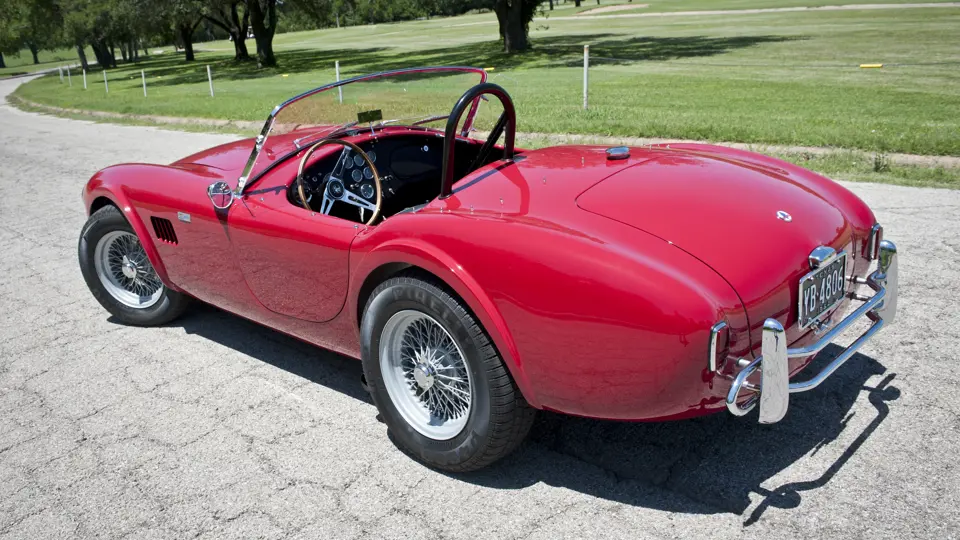
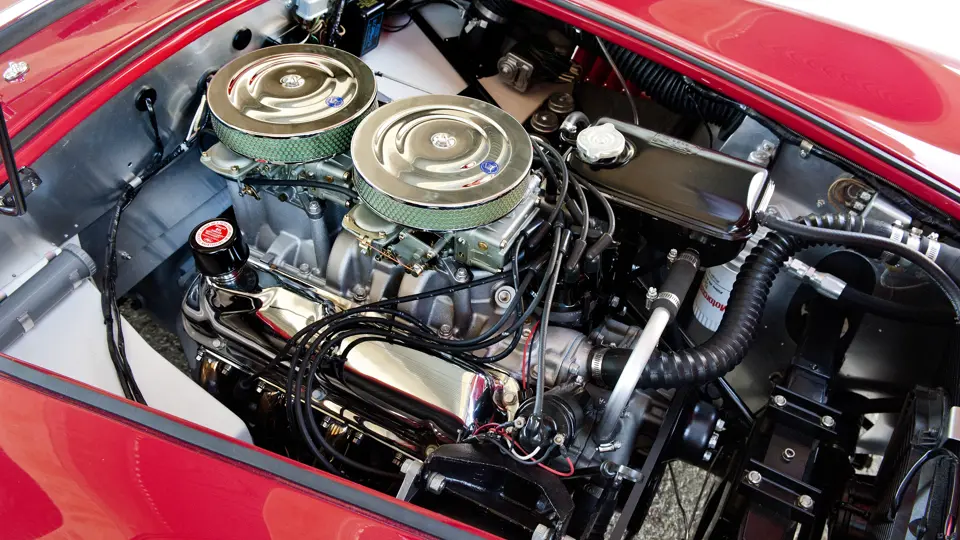


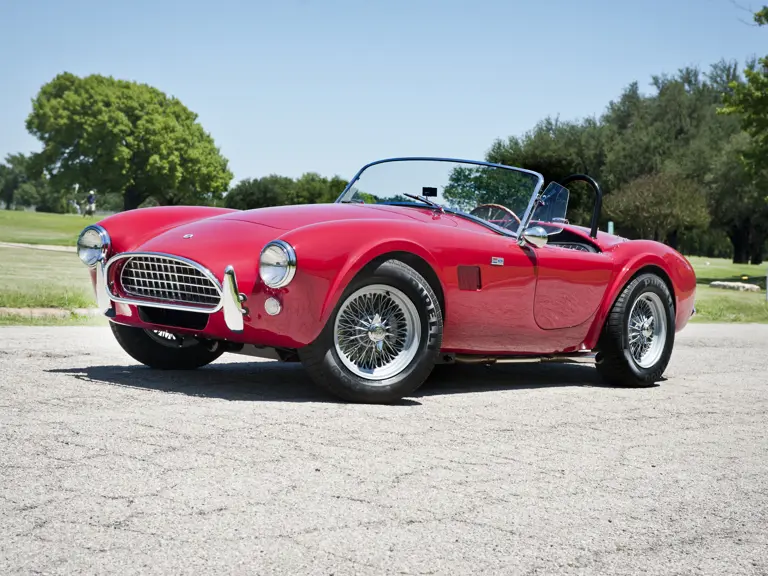

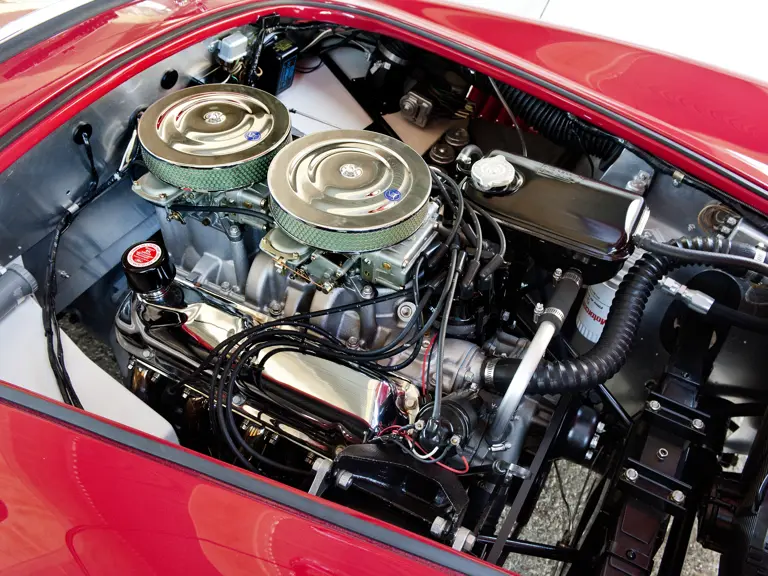
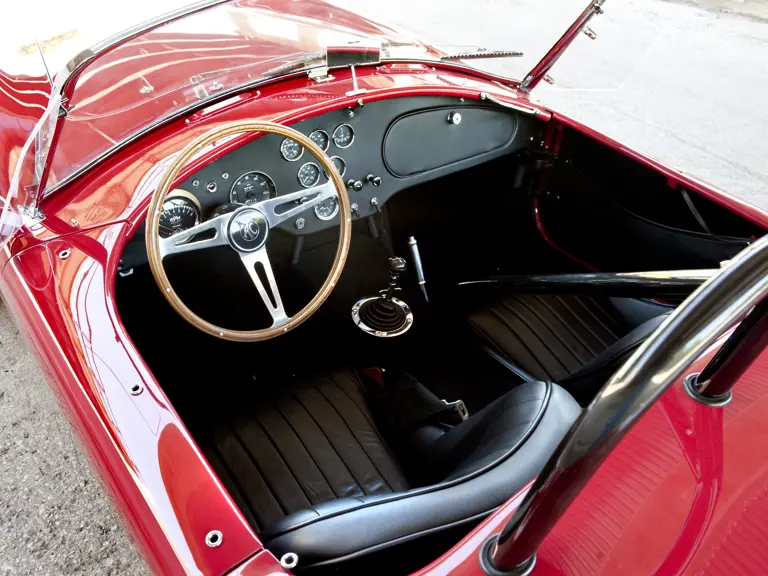
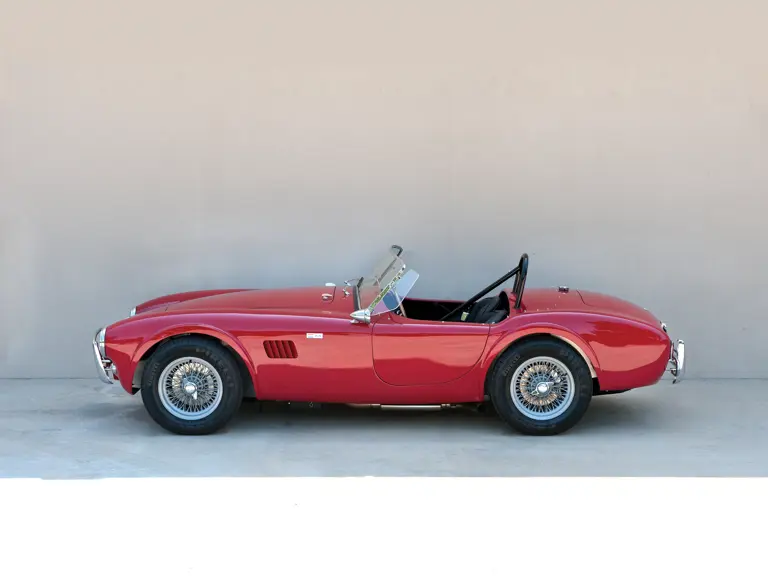
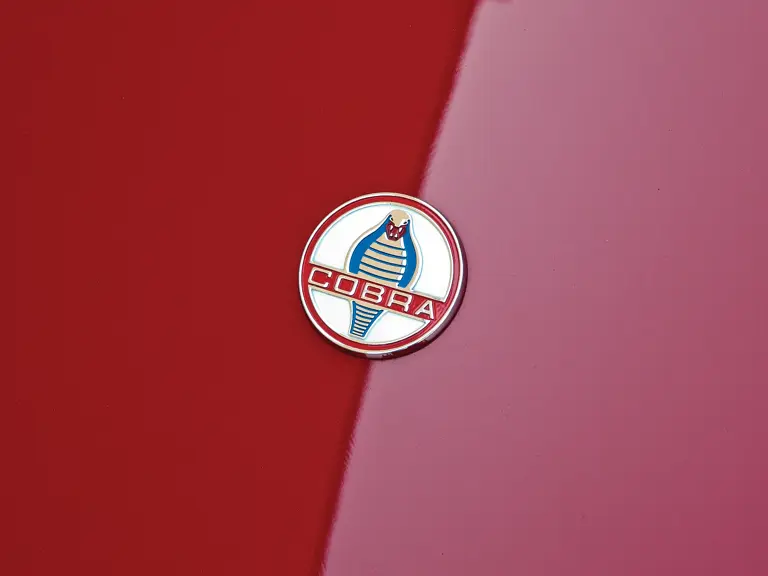
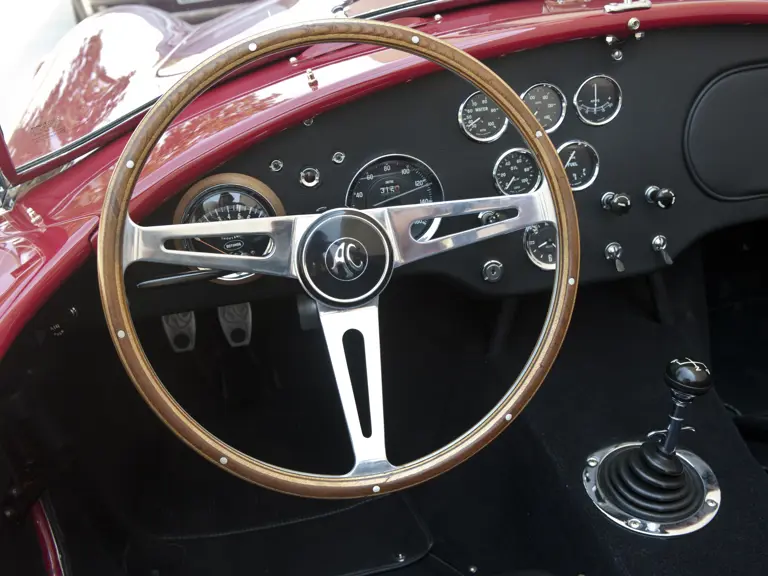
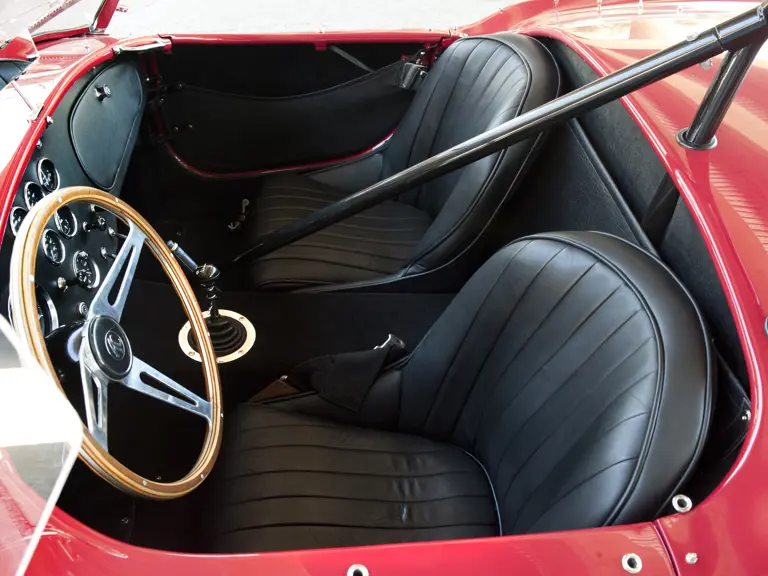
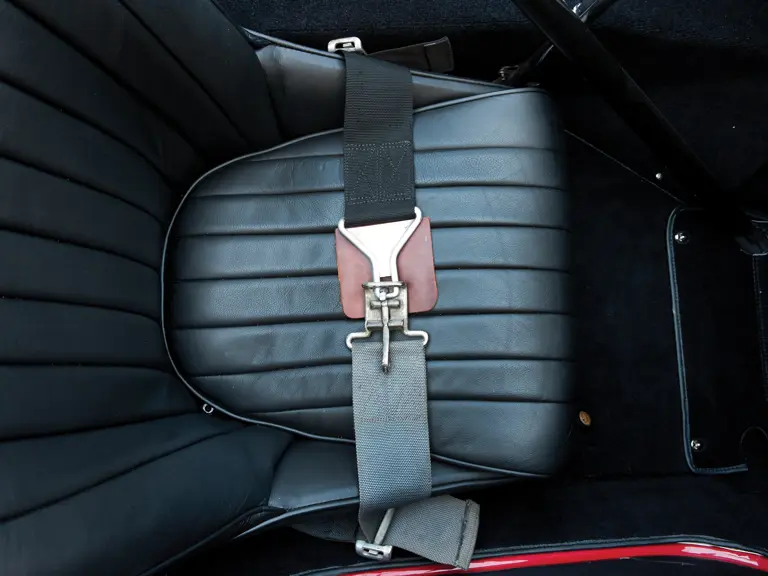
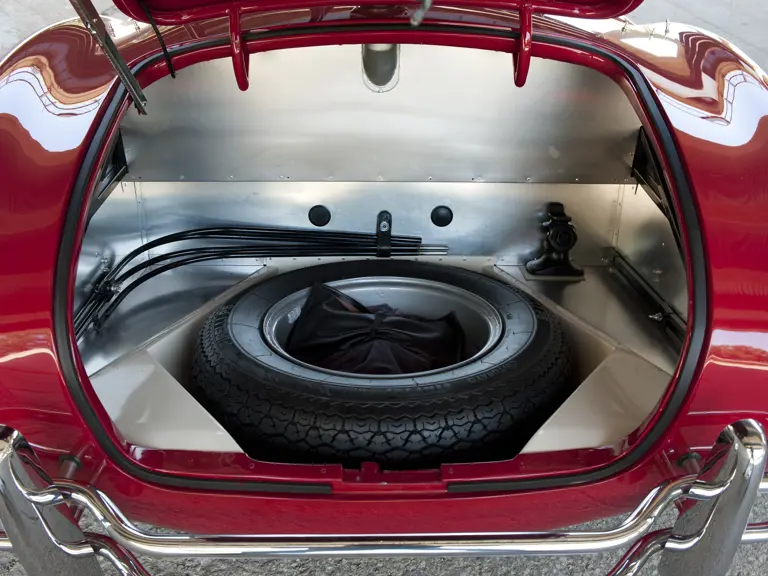
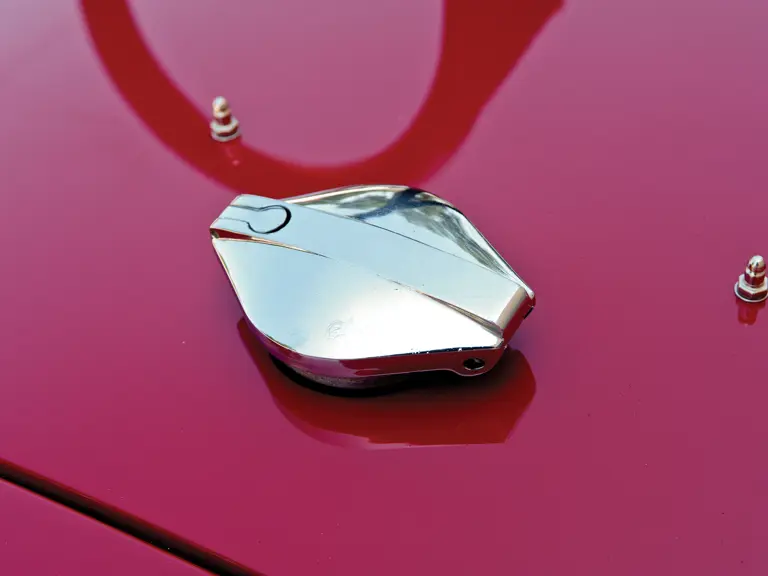
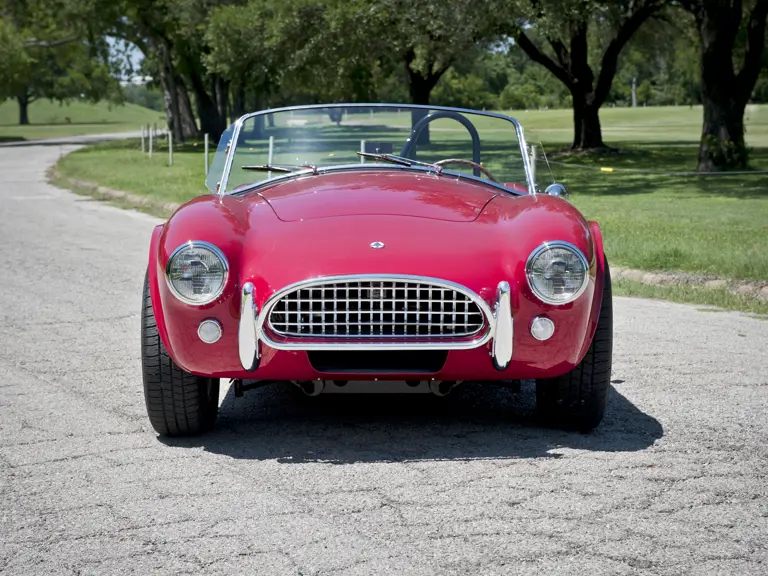
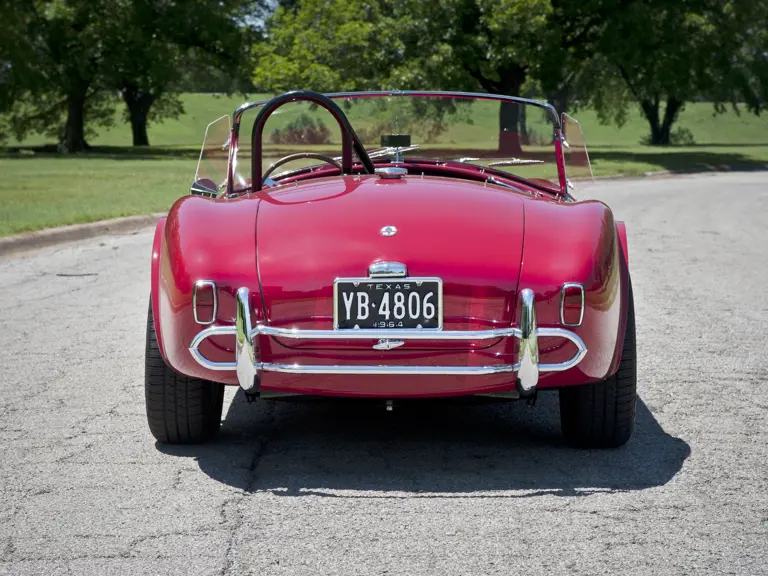
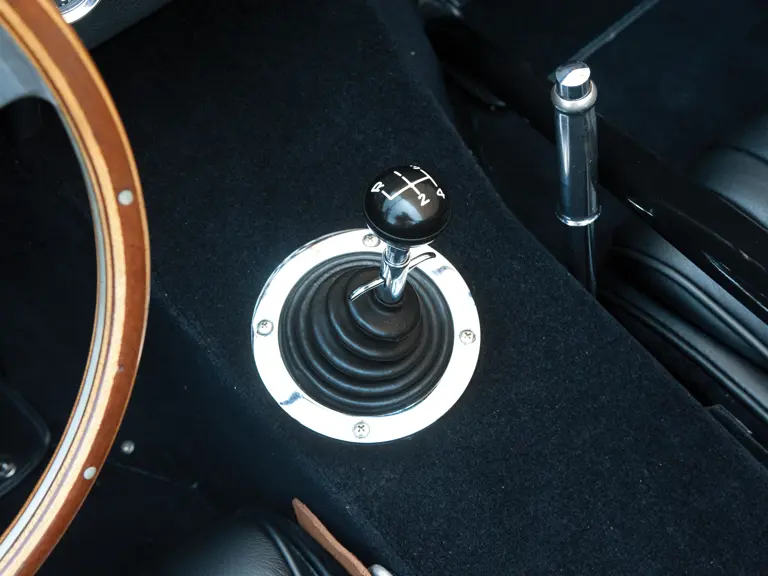
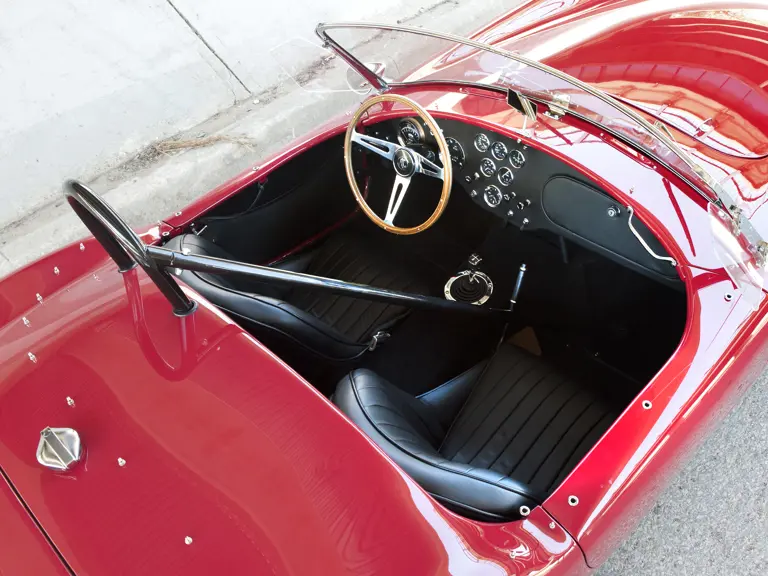
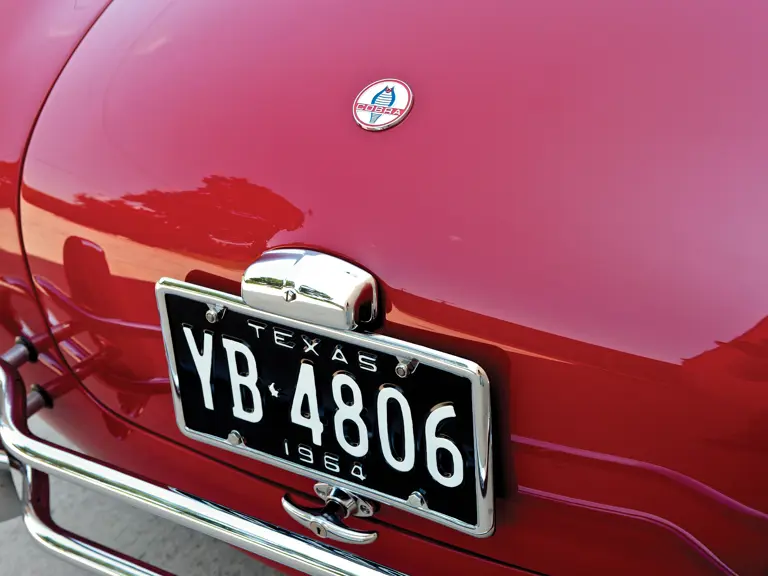
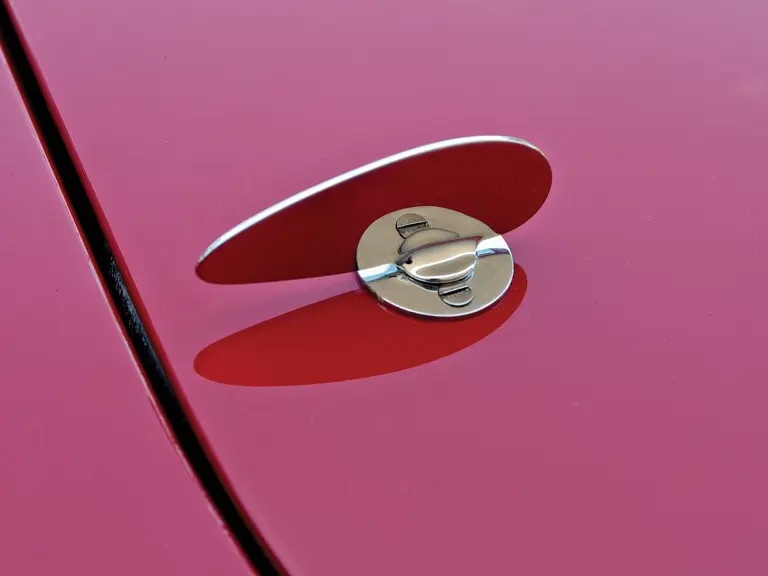
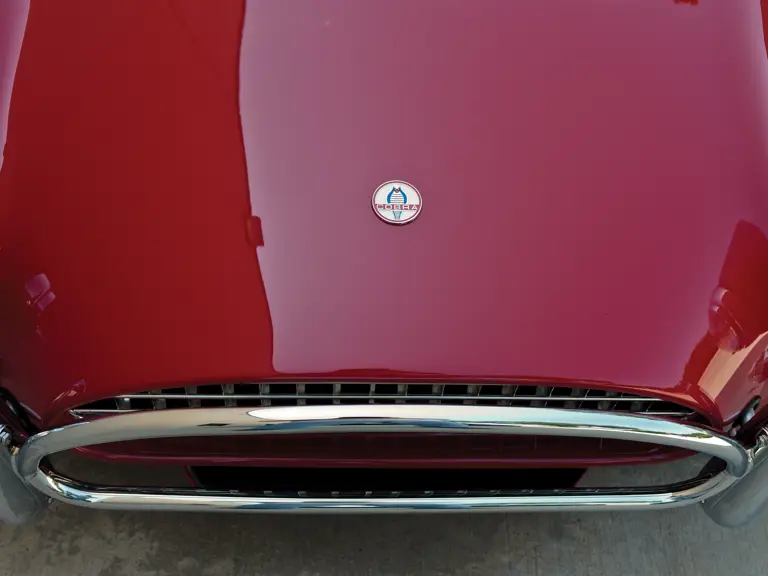
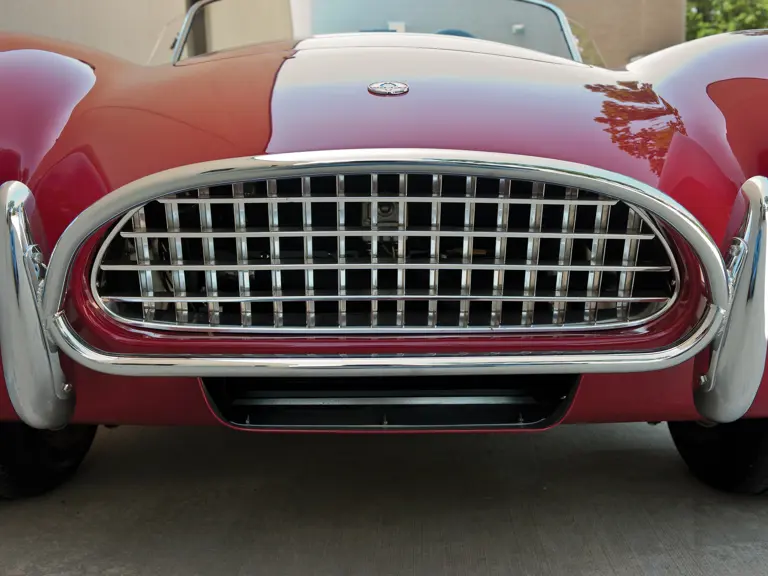
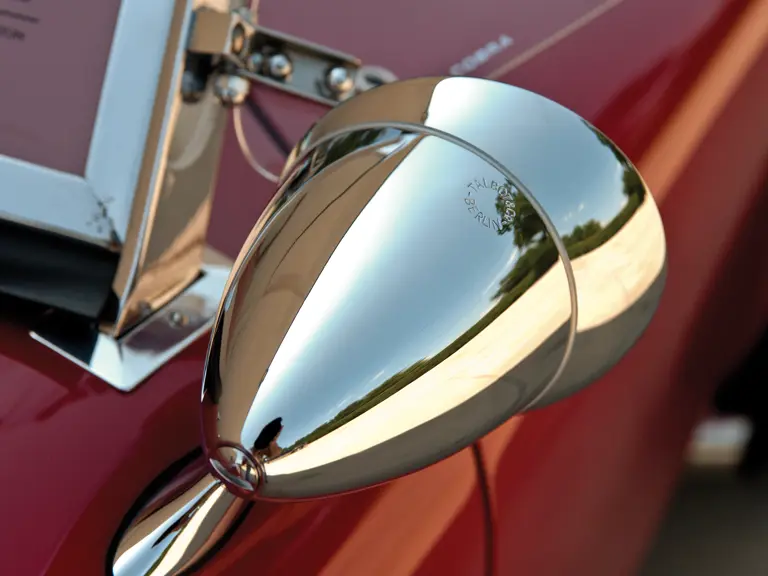
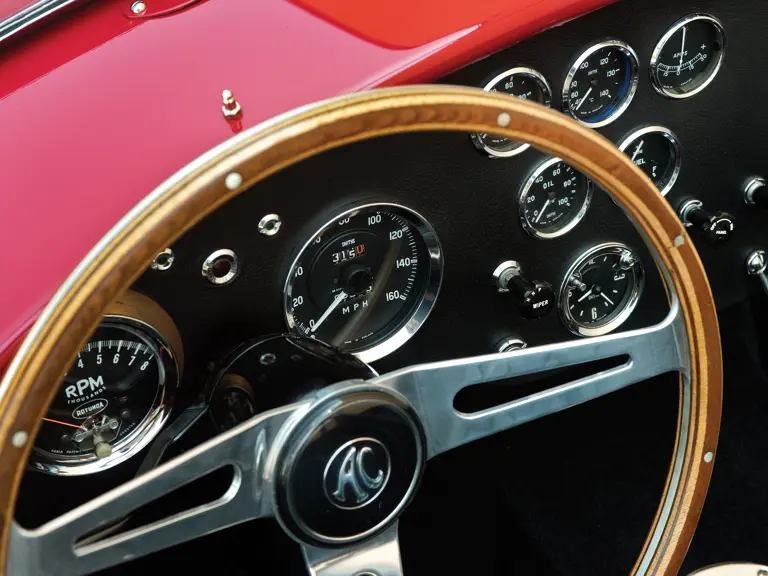
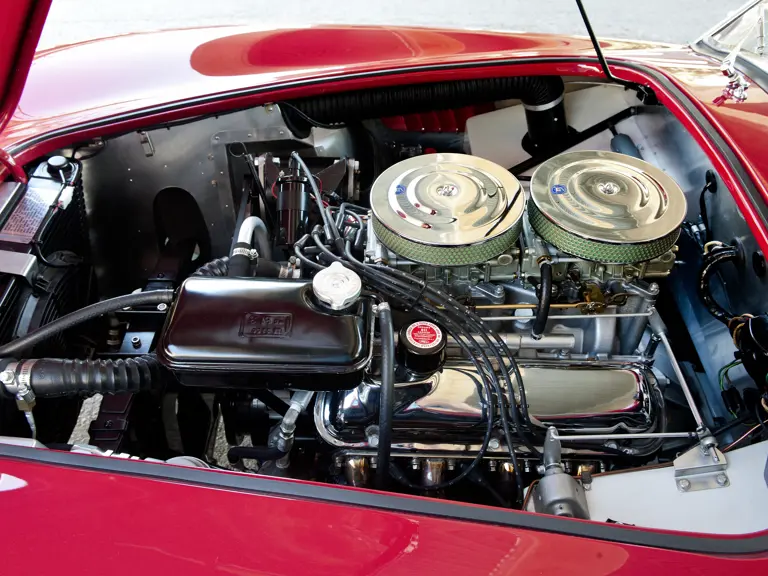
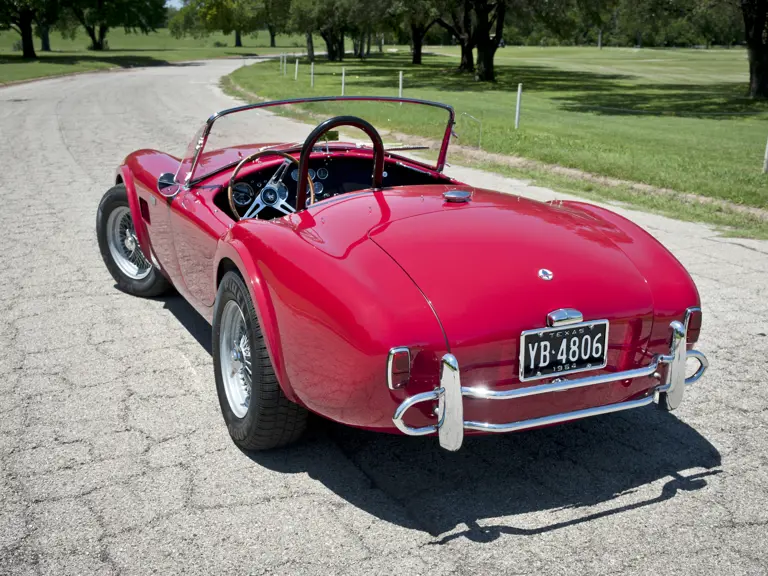
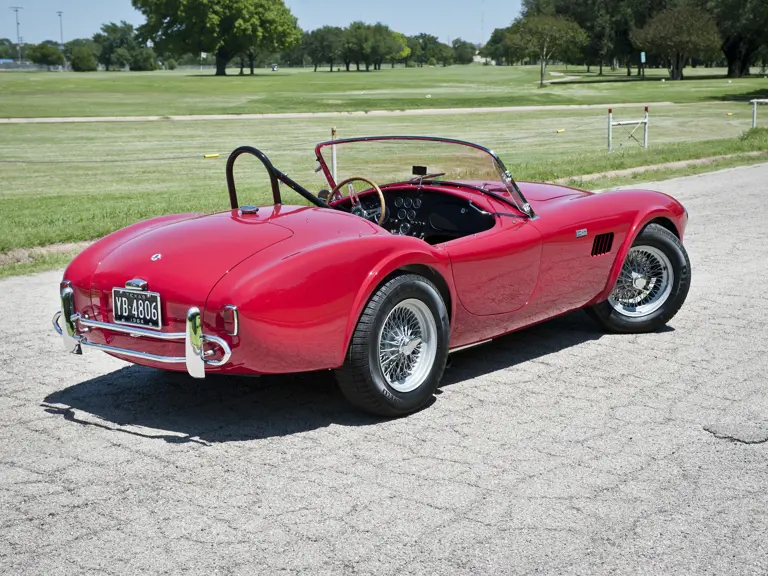
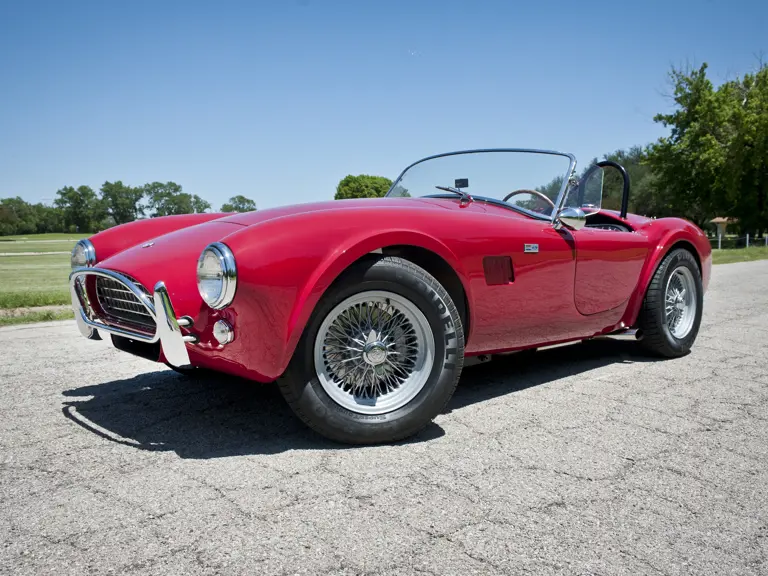
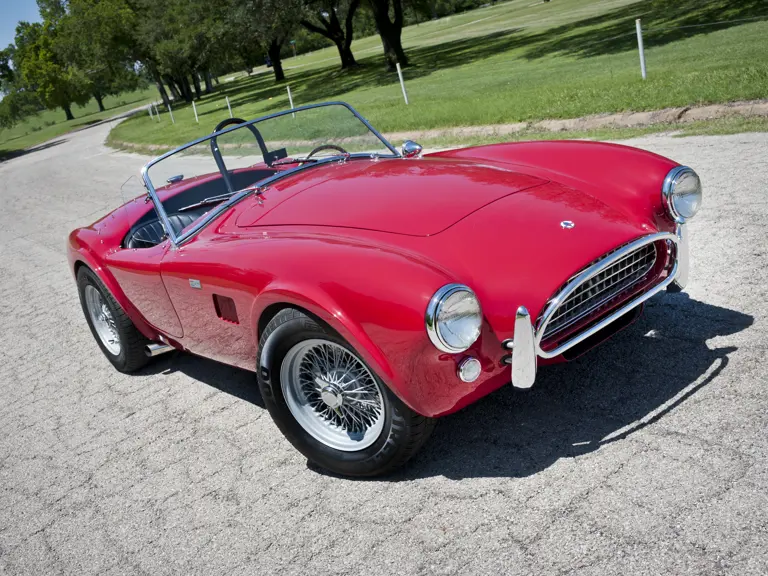
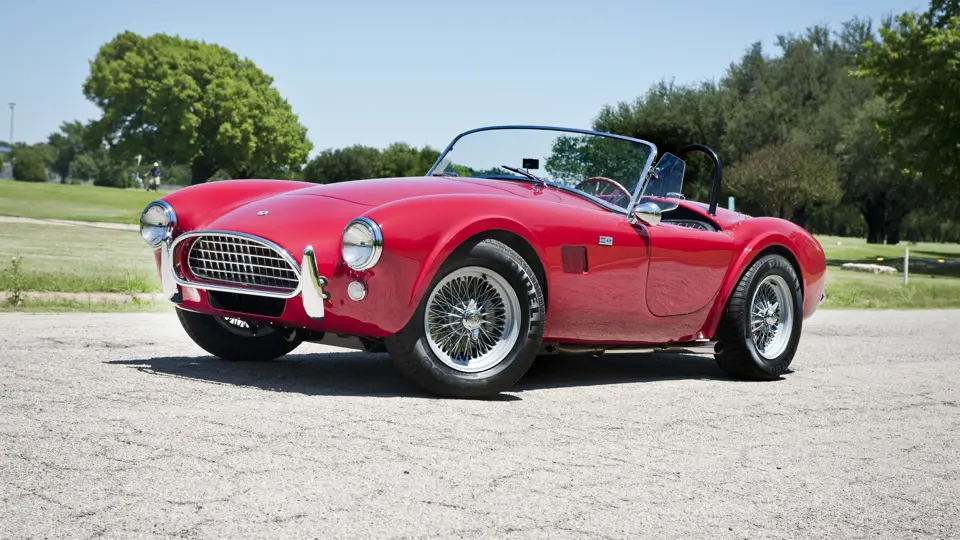
 | Monterey, California
| Monterey, California
